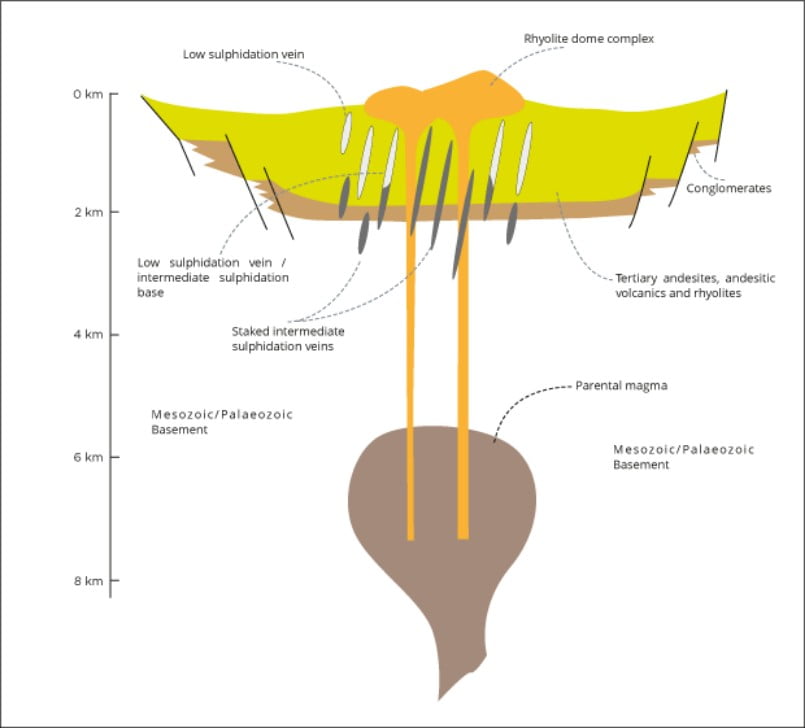Peru Silver - Santas Gloria
Overview
High Grade Silver-Dominant System
Santas Gloria comprises 3 concessions totalling 1100 hectares. Silver is the main target commodity. Underground channel sampling of accessible historical workings by Mantaro returned silver grades of up to >10,000 g/t Ag (ca. 320 oz/t Ag), up to 5% lead and up to 2.5% zinc. Surface channel samples returned gold assays of up to 56 g/t.
Strategically Located
Santas Gloria is located 40 km to the SW of the Casapalca-Toromocha camp. Mineralization at Santas Gloria is of an intermediate sulphidation epithermal type — as is typical of many of the underground mines in the area such as Austria Duvaz, Argentum, Yauliyacu and Casapalca.
Community Access Agreement Until 2028
The local community is pro-mining and an access agreement is in place until 2028. The community is currently providing support workers to assist with Mantaro's field work.
Easy Access
Santas Gloria is located 55 kilometres directly to the east of Lima — a distance of 98 km by road for a travel time of approximately 3.5 hours. The area is typical Andean highland at an average altitude of 3300 metres. Access throughout much of the concession is good.
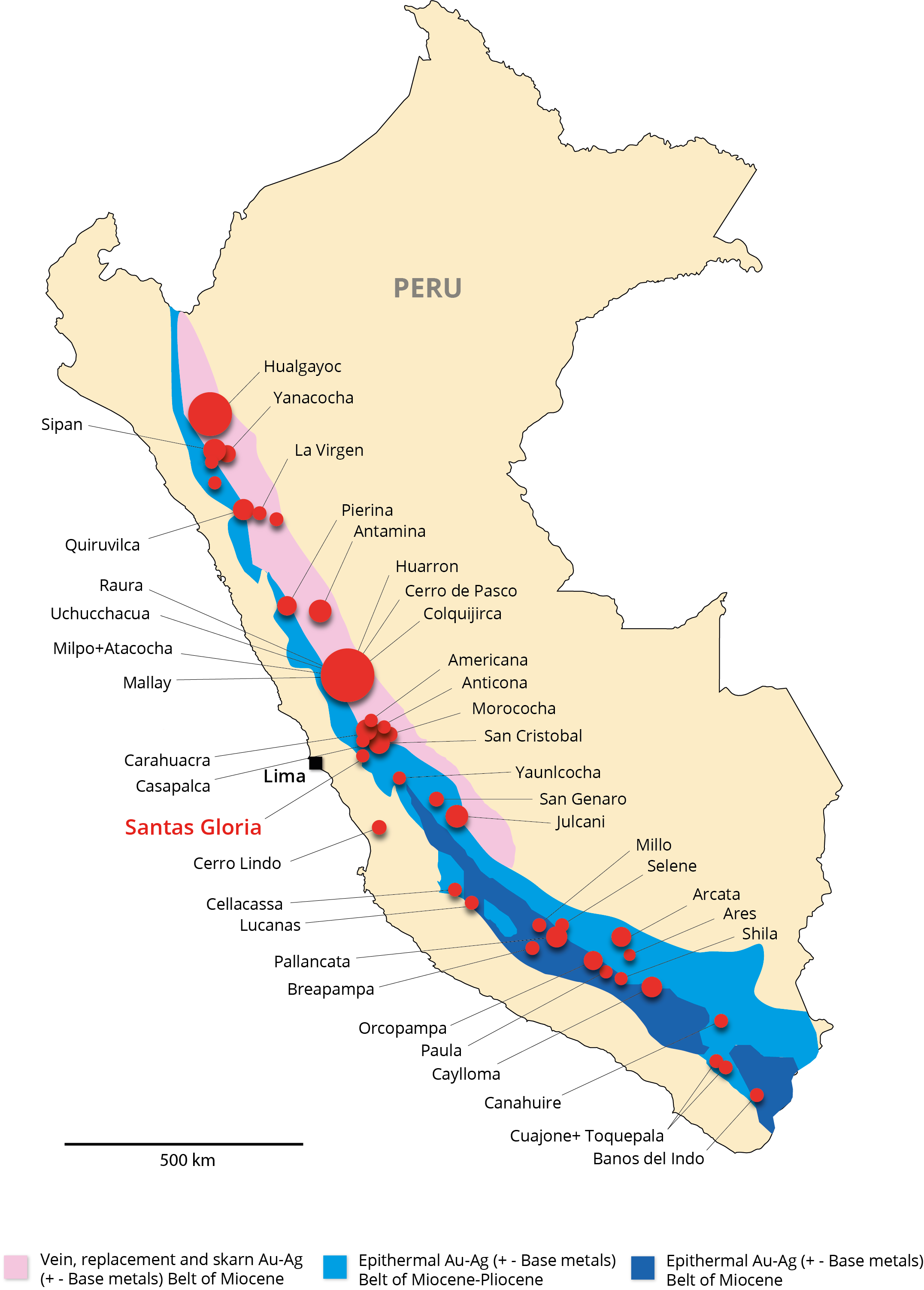
Historic Small Scale Mining — Never Drill Tested
An estimated 2 km of underground workings have exploited only two small areas of San Jorge and Tembladera veins. To date 16 veins and major vein splays have been defined — with a cumulative strike extension of at least 12 kilometres.
Underground workings have provided access to some part of the San Jorge and Tembladera Veins — allowing Mantaro to conduct underground channel sampling of accessible veins.
Geology and Mineralization
Mineralization is of an intermediate sulphidation epithermal vein type — primarily hosted in volcanic and volcano-clastic units of the Rimac and Huarochiri Groups. This is typical of vein deposits throughout the district.
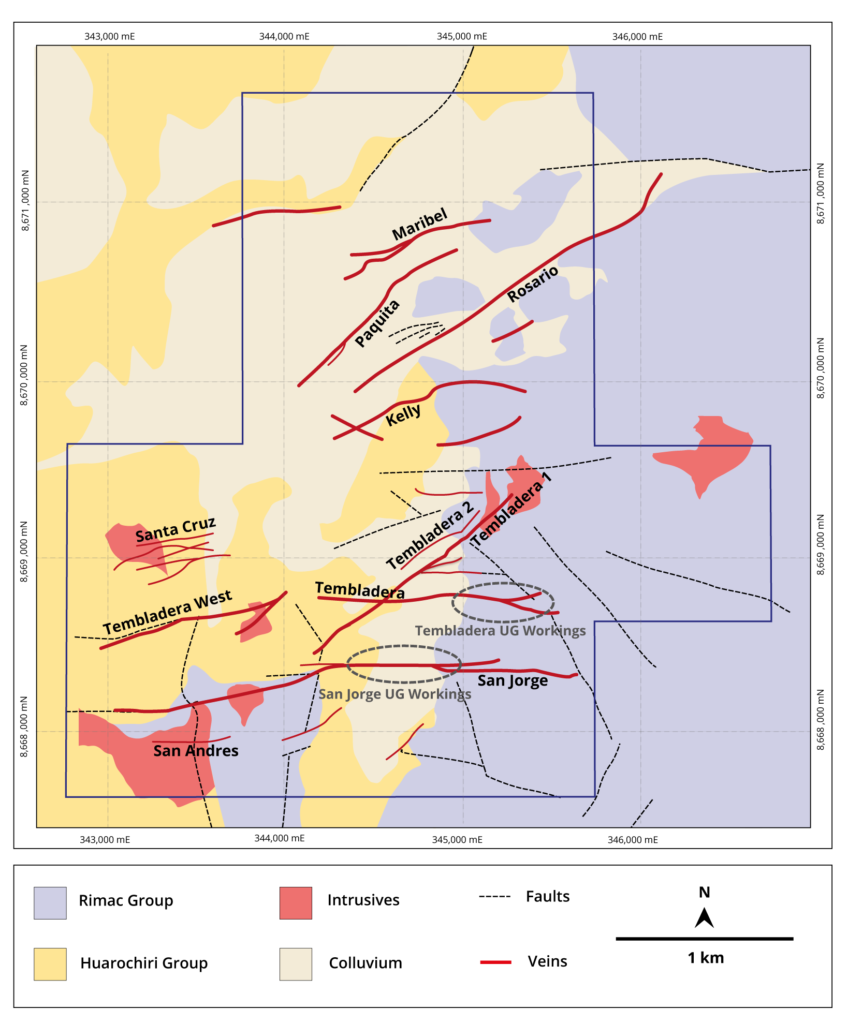
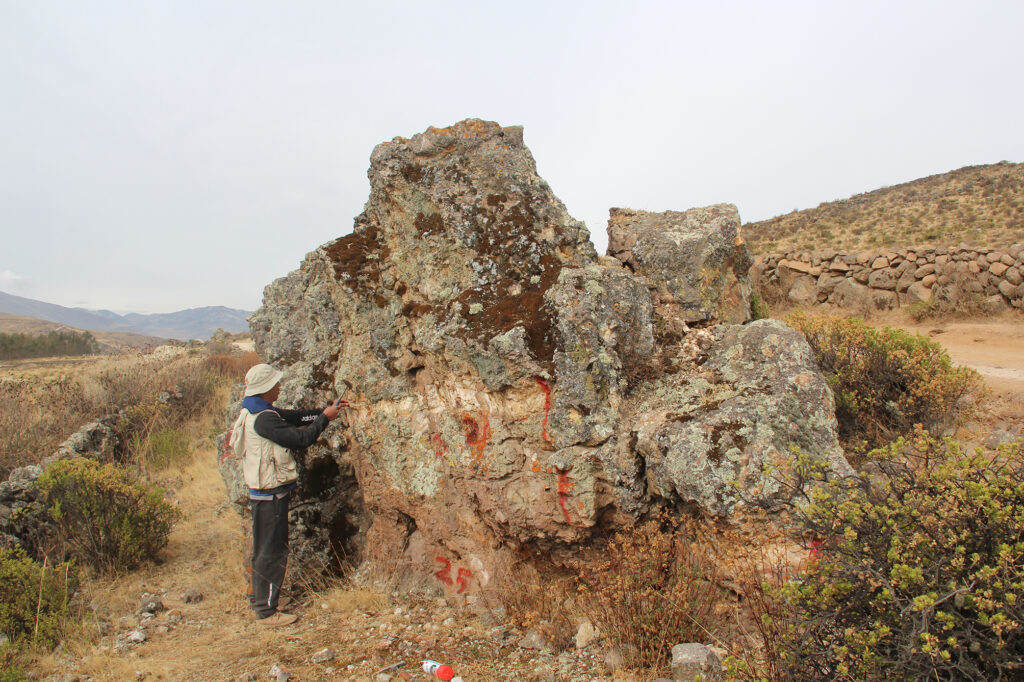
Surface Geochemistry
Mantaro has channel sampled approximately 30% of known vein outcrops — all veins are pervasively oxidized at surface and leached of all sulphides.
- Despite pervasive leaching — surface channel sampling has defined robust silver and gold grades along parts of the San Jorge, Tembladera, Tembladera 1, Kelly, Pacquita and Maribel veins.
- Silver grades are generally high above the historical San Jorge underground workings over a strike length of approximately 450 m (Figure 30). The Tembladera 1 and 2 veins are significantly silver anomalous over a cumulative strike length of at least 500 m. Channel samples define moderate to high silver grades over approximately 750 m of the Paquita vein and almost one kilometres strike of the Maribel vein. Lead and zinc grades are generally of low tenor — as would be expected in pervasively leached outcrops such as these.
- Surface channel samples defined a coherent and strong gold anomaly (up to 56 g/t Au) over a strike length of approximately 200 m at a flexure in the Kelly vein.
- Channel samples also returned significant gold assays in parts of the Paquita and Maribel veins — along parts of the vein that are also highly anomalous in silver.
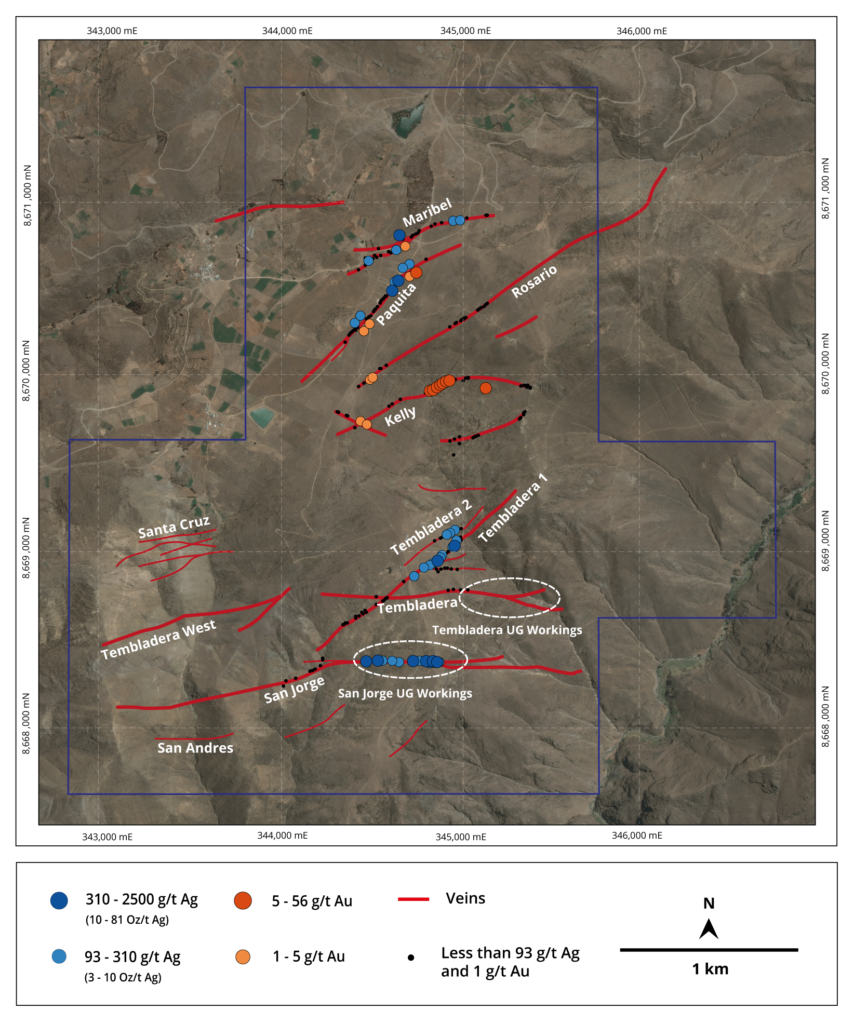
Underground Geochemistry
Mantaro collected channel samples across veins in accessible parts of the underground historical workings. Channel samples were from parts of veins that were not the focus of historical mining — as such results are likely to be of a lower tenor than material that was mined.
In total 111 channel samples were taken over a cumulative strike length of several hundred metres. Sampled veins were partly oxidized and locally leached of sulphides.
- A large number of samples assayed above 150 g/t Ag (ca. 5 oz/t Ag) and a significant number of assayed above 450 g/t Ag (ca. 15 oz/t Ag). Sixteen of the 111 underground channel samples assayed above 1000 g/t Ag (ca. 32 oz/t) — of which one sample assayed above the maximum detection limit of 10,000 g/t Ag (ca. 320 oz/t Ag).
- Lead grades of between 1 to 5% and zinc grades of between 1 to 2.5 % are common — although partial oxidation has removed base metal sulphides from many samples.
Deposit Type — Intermediate Sulphidation With Excellent Depth Potential
- Santas Gloria is a silver-base metal vein system — otherwise known as Cordilleran silver-base metal type or intermediate sulphidation epithermal type.
- Globally such deposit-types are attractive exploration targets due to their high grade nature and the large vertical extent of precious and base metal endowment.
- Metal deposition is by non-boiling precipitation which results in deposition of metals over large vertical intervals. Localized boiling at the tops of the system may result in high grade bonanza shoots — which may explain the high surface gold grades in the Pacquita vein system.
- Veins at Santas Gloria are steeply dipping, up to 4 metres wide, and display multiphase and brecciated texture. Multiple fluid pulses and open space created during brecciation are critical in development of high grade mineralization.
